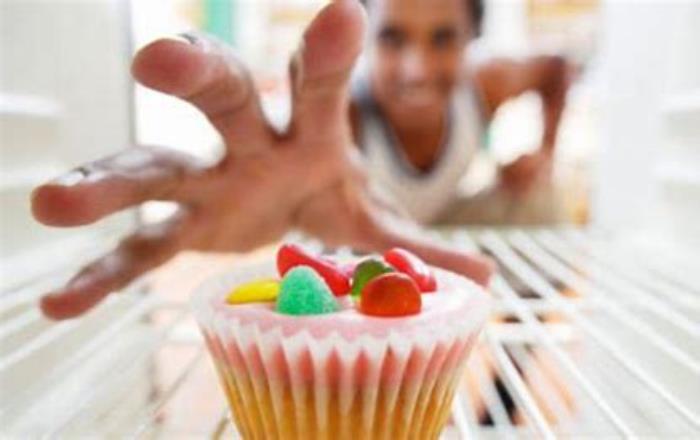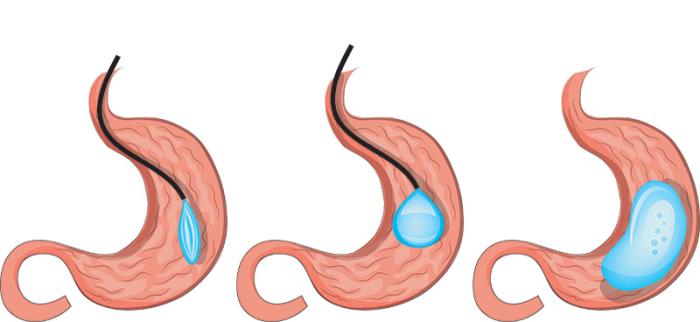Cravings are intense desires for specific foods, often triggered by emotional, psychological, or physiological factors. They can lead to overeating and unhealthy dietary choices, making understanding their science crucial for effective weight management.
How the Intragastric Balloon Affects Appetite and Cravings
The intragastric balloon is a non-surgical weight loss device that occupies space in the stomach, creating a sensation of fullness. This helps to reduce appetite and food intake, as the balloon can significantly limit the volume of food the stomach can hold. As a result, many patients report a decrease in cravings for high-calorie foods, leading to healthier eating patterns.
By altering the physical capacity of the stomach, the balloon encourages individuals to make more mindful food choices and adopt healthier eating habits. However, it is essential for patients to combine this mechanical effect with lifestyle changes for sustainable weight loss. Understanding these changes can enhance the effectiveness of the procedure and contribute to long-term success.
Common Triggers for Food Cravings Post-Balloon Placement
Post-balloon placement, common triggers for food cravings include stress, boredom, and specific environmental cues, such as seeing or smelling food. Emotional eating can also intensify cravings, making awareness of triggers essential for management.
The Importance of Mindful Eating After Surgery
Mindful eating is crucial for patients after intragastric balloon surgery, as it fosters a deeper awareness of hunger cues and food choices. By focusing on the sensory experience of eating—such as taste, texture, and smell—individuals can better regulate their portions and make healthier decisions. This approach helps in developing a healthier relationship with food, reducing the likelihood of emotional eating or mindless snacking.

Practicing mindful eating also encourages patients to savor their meals, promoting satiety and satisfaction with smaller portions. This can be particularly beneficial post-surgery, as the stomach's reduced capacity necessitates a more intentional approach to eating. Adopting these habits can lead to improved outcomes and a greater likelihood of maintaining weight loss.
Strategies for Identifying and Managing Cravings
To manage cravings effectively, individuals can keep a food diary, identify emotional triggers, and implement healthy coping strategies. Techniques such as distraction, engaging in hobbies, or practicing relaxation can also help control cravings.
Nutritional Guidelines to Combat Cravings
Nutritional guidelines to combat cravings include consuming balanced meals rich in protein, healthy fats, and complex carbohydrates. Regularly eating small, nutrient-dense meals can stabilize blood sugar levels and reduce the likelihood of cravings.
Hydration and Its Role in Reducing Food Cravings
Hydration plays a vital role in managing food cravings and overall health, particularly after intragastric balloon surgery. Often, feelings of hunger can be confused with thirst, leading individuals to consume unnecessary calories. Drinking adequate water throughout the day can help curb cravings and promote a sense of fullness, making it easier to stick to dietary goals.
In addition, staying well-hydrated supports various bodily functions, including digestion and metabolism. Patients should aim to drink water consistently, avoiding high-calorie beverages that can contribute to unwanted weight gain. Incorporating hydration as a key component of a healthy lifestyle can enhance the effectiveness of the intragastric balloon and support weight loss efforts.
The Benefits of Regular Meal Timing After Balloon Placement
Establishing regular meal timing after balloon placement promotes metabolic stability and reduces cravings. Scheduled meals help regulate hunger hormones and prevent extreme hunger that can lead to overeating.
How to Use Portion Control to Manage Cravings
Portion control is an effective strategy for managing cravings, especially for individuals with an intragastric balloon. Given the reduced stomach capacity, it is essential to practice portion control to maximize the benefits of the balloon. Patients can begin by using smaller plates and utensils, which can create an illusion of a full plate while limiting the amount of food consumed.
Additionally, being aware of serving sizes and reading nutrition labels can empower individuals to make healthier choices. By consciously measuring and controlling portions, patients can enjoy a variety of foods without overindulging, allowing for a more balanced diet. This practice not only helps manage cravings but also reinforces mindful eating habits, contributing to long-term weight management.
The Role of Fiber in Reducing Hunger and Cravings
Exercise plays a significant role in curbing food cravings and supporting weight loss efforts after intragastric balloon surgery. Physical activity can help regulate hormones related to appetite and satiety, leading to a decrease in cravings. Engaging in regular exercise releases endorphins, which can improve mood and reduce emotional eating triggers.

Healthy Snack Options for When Cravings Strike
When cravings strike, opting for healthy snacks like fresh fruits, vegetables with hummus, Greek yogurt, or nuts can help satisfy hunger without compromising dietary goals. These snacks provide essential nutrients and promote satiety, making them ideal for maintaining a balanced diet.
Understanding the Psychological Aspects of Cravings
Cravings often stem from emotional and psychological factors, including stress, boredom, and social influences. Understanding these triggers can help individuals develop strategies to cope with cravings more effectively, promoting healthier eating habits and enhancing overall well-being.
The Role of Exercise in Managing Cravings
Regular physical activity can play a significant role in managing cravings by releasing endorphins, which improve mood and reduce stress. Exercise also helps regulate appetite hormones, making it easier to resist unhealthy food choices and maintain a balanced diet.
How Sleep Affects Appetite and Cravings
Adequate sleep is crucial for hormonal balance, particularly regarding appetite-regulating hormones like ghrelin and leptin. Poor sleep can lead to increased cravings for high-calorie foods, making it essential to prioritize sleep for better appetite control and weight management.
The Impact of Stress on Eating Habits
Stress can significantly influence eating behaviors, often leading to emotional eating or cravings for comfort foods. Developing stress management techniques, such as mindfulness, meditation, or engaging in hobbies, can help mitigate stress-related cravings and promote healthier choices.
Creating a Support System for Craving Management
Establishing a robust support system is vital for managing cravings effectively. Whether through family, friends, or support groups, sharing experiences and strategies can provide encouragement, accountability, and motivation in the journey toward healthier eating habits.
Long-Term Strategies for Sustaining Weight Loss
To achieve lasting weight loss, individuals should focus on sustainable lifestyle changes rather than quick fixes. Incorporating balanced nutrition, regular exercise, mindful eating, and ongoing support can help maintain motivation and prevent the return of old habits.
The Importance of Regular Follow-Ups with Healthcare Providers
Regular follow-ups with healthcare providers are crucial for monitoring progress and addressing any concerns related to cravings or weight management. These check-ins can provide valuable insights, personalized guidance, and support to help individuals stay on track.
Exploring Alternative Therapies for Craving Control
Alternative therapies, such as cognitive-behavioral therapy, acupuncture, or mindfulness meditation, can be effective in managing cravings. Exploring these options may offer additional tools for individuals seeking to overcome challenges related to food cravings.
Success Stories: Overcoming Cravings Post-Balloon Placement
Real-life success stories can inspire and motivate others facing similar challenges. Sharing experiences of individuals who have successfully managed their cravings after intragastric balloon placement can provide hope and practical strategies for others on their weight loss journey.
Future Trends in Bariatric Treatments and Craving Management
Emerging trends in bariatric treatments may include advancements in technology and personalized medicine to address cravings more effectively. Ongoing research and innovation are expected to enhance the understanding of cravings and develop more effective management strategies for individuals undergoing weight loss treatments.
Emotional Eating: Recognizing and Addressing Triggers
Emotional eating occurs when individuals turn to food for comfort during stress, sadness, or boredom. Recognizing triggers, such as specific emotions or situations, is vital in addressing this behavior and developing healthier coping mechanisms.
The Role of Exercise in Curbing Food Cravings
Regular physical activity can effectively curb food cravings by releasing endorphins and reducing stress. Exercise not only promotes a sense of well-being but also distracts from cravings, helping individuals focus on their weight loss journey.
Techniques for Managing Stress-Related Cravings
Managing stress-related cravings involves techniques like mindfulness meditation, deep breathing exercises, or yoga. These practices can help reduce stress levels and provide alternative ways to cope without resorting to food.
Support Groups: Finding Community and Accountability
Joining support groups offers community and accountability for individuals struggling with cravings. Sharing experiences with others can provide encouragement, practical tips, and a sense of belonging, making it easier to navigate challenges.
Professional Guidance: When to Seek Help for Cravings
If cravings become overwhelming or lead to unhealthy eating patterns, seeking professional guidance from a dietitian or therapist can be beneficial. They can provide personalized strategies and support for managing cravings effectively.
Keeping a Food Diary to Track Cravings and Triggers
Maintaining a food diary helps track cravings and triggers, providing insight into eating patterns and emotional responses. This practice can identify specific situations that lead to cravings, facilitating better management strategies.
The Importance of Patience and Persistence in Managing Cravings
Managing cravings requires patience and persistence, as behavior change takes time. Understanding that setbacks may occur is crucial, and focusing on gradual progress can lead to long-term success.
Long-Term Strategies for Sustained Success
Long-term strategies for sustained success in managing cravings include adopting a balanced diet, practicing mindful eating, and regularly engaging in physical activity. Building healthy habits over time can significantly reduce the intensity and frequency of cravings.
Best Intragastric Balloon Treatment in India
The Best Intragastric Balloon Treatment in India is performed by expert surgeons who utilize advanced techniques to ensure optimal outcomes for patients, offering a personalized treatment plan tailored to individual health needs.
Best Intragastric Balloon Hospitals in India
The Best Intragastric Balloon Hospitals in India are equipped with cutting-edge technology and facilities, providing top-notch care, including pre-surgery consultations, surgical expertise, and post-operative recovery support to ensure a smooth patient journey.
Intragastric Balloon Cost in India
When considering the Intragastric Balloon Cost in India, patients benefit from affordable and transparent pricing at leading hospitals, which offer cost-effective treatment options without compromising the quality of care.
Best Intragastric Balloon Doctors in India
The Best Intragastric Balloon Doctors in India are highly experienced in performing the surgery, utilizing a patient-centric approach that ensures personalized care, precise surgical techniques, and dedicated follow-up care to enhance recovery.
FAQs About Managing Cravings After Intragastric Balloon Placement
Q: What are some healthy snacks for managing cravings after balloon placement?
A: Healthy snacks like fruits, vegetables, nuts, and Greek yogurt can satisfy cravings without compromising your diet.
Q: How can I recognize emotional eating triggers?
A: Reflect on your eating patterns and note when you eat out of boredom or stress rather than hunger.
Q: What role does exercise play in managing cravings?
A: Exercise releases endorphins that enhance mood and distract from cravings, helping to curb appetite.
Q: When should I seek professional help for cravings?
A: If cravings lead to unhealthy eating patterns or become overwhelming, consider consulting a dietitian or therapist.
Q: How can a food diary help with managing cravings?
A: A food diary tracks eating habits and emotional triggers, providing insights to help manage cravings effectively.
Related Resources
At ArogyaJivan, we strive to provide you with the most accurate and up-to-date information to help you make informed decisions about your healthcare. Whether you are searching for the Best Doctors in India or the Top 5 Doctors in India, our resources are tailored to guide you through your medical journey. Additionally, our comprehensive guides on the Best Hospitals in India and the Top 5 Hospitals in India will assist you in choosing the right healthcare facility for your needs. Explore these resources to ensure you receive the best possible care.